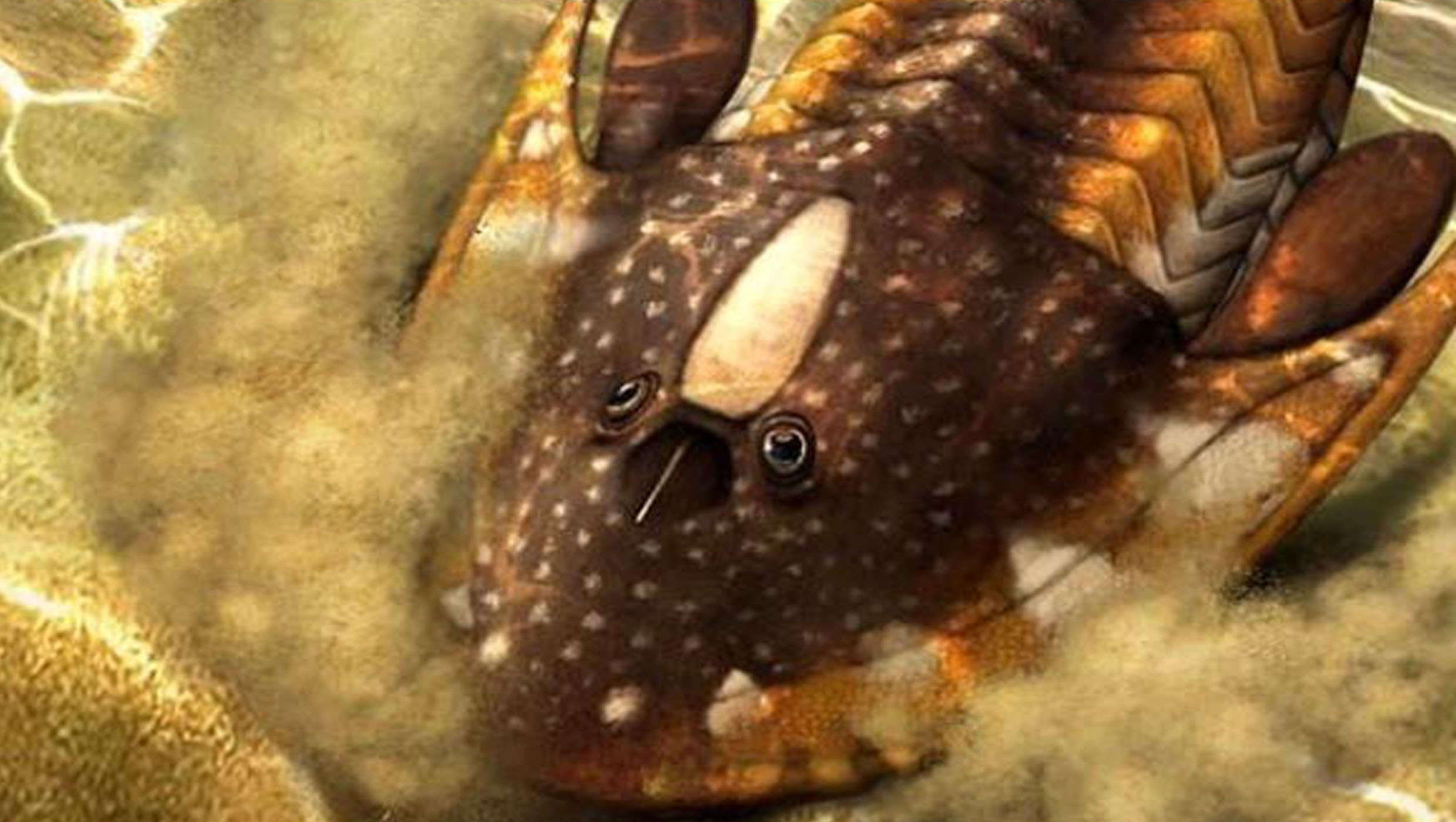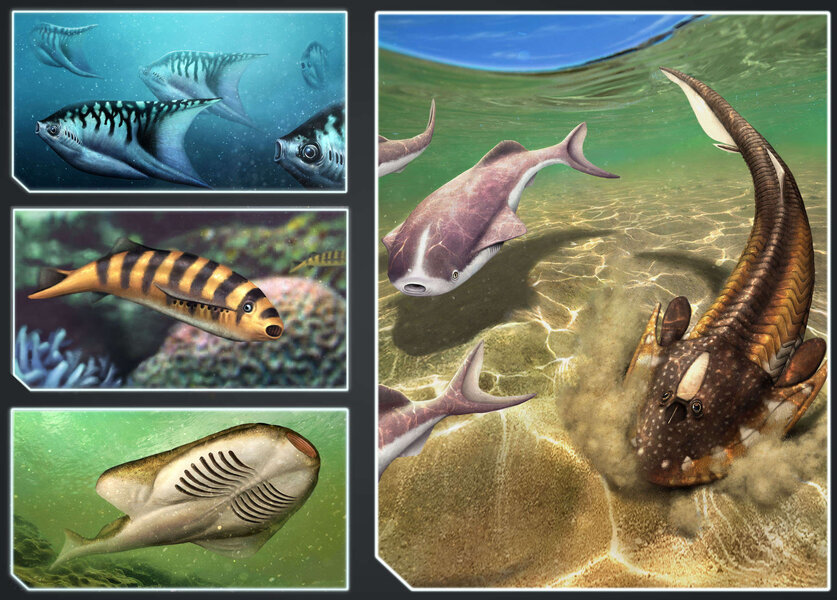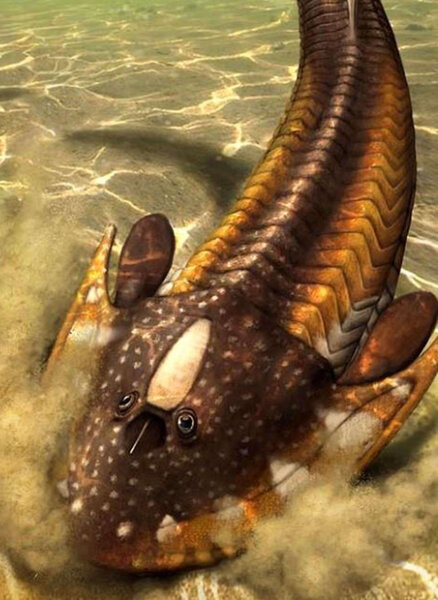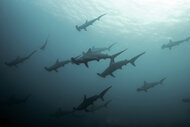Create a free profile to get unlimited access to exclusive videos, sweepstakes, and more!
Ancient Roombas of the sea vacuumed the seafloor for food, and they're changing what we know about evolution

Back in the depths of time lived a bizarre jawless fish with its own headgear that vacuumed the seafloor for food. It seemed so unfit for swimming, you would wonder why it didn’t go extinct much earlier than 370 million years ago.
Osteostracans were jawless fish that lived between the Middle Silurian to the Late Devonian period, when most things that lurked in the seas could easily inspire aliens for a new sci-fi show. Any Farscape fans would possibly mistake them for the Earth spawn of living spaceship Moya — except Leviathans like Moya were aerodynamic. The heavy built-in helmets and strange body shape of these things seemed as if they would have weighed them down in their ocean realm, but now a team of scientists from the University of Bristol have reimagined how they got around. These fish were also the ancestors of all jawed vertebrates.
"Osteostracans were characterized by bony, heavy headshields, and as a consequence, many authors interpreted them as cumbersome fishes that would have lived on the bottom showing poor manoeuvrability," paleontologist Humberto Ferrón, who co-led a study recently published in Cell, told SYFY WIRE. "However, this kind of structure provided extra lift to these animals, analogous to aircraft wings, and most likely higher potential to adopt different locomotory strategies."
These creatures had some pretty legit armor. The strange horn-like structures on their heads, however, were not just there to show off for mates or scare off predators. They were actually designed to help these stem-gnathostomes (literally “jawed mouths” since they were the precursor to actual jawed vertebrates) swim as efficiently as possible, which disproves the previous belief that fish only became efficient swimmers after their jaws and fins fully evolved. Until now, vertebrates were thought to have developed a body plan that helped them grow more and more active and predatory, until vertebrates that devolved jaws for snatching up food ended up being the ultimate result of this evolution.
There is nothing alive that can really compare to osteostracans. Extant bottom-feeders such as flatfishes, skates, and rays have vastly different morphologies, so Ferrón and his team needed to create computer simulations that incorporated the unique morphology of several different osteostracan species to determine how well they could swim, if at all. CT scans of fossils helped the team figure out what the different species actually looked like before they could figure out how they moved. The simulations that followed, which tested how these fish were able to function with such deceptively cumbersome heads, came as a surprise.
"The closest relatives of osteostracans are actually jawed vertebrates, including bony fishes and sharks and all terrestrial groups of vertebrates," Ferrón said. "We argue that these creatures had more diverse lifestyles than previously thought. However, the acquisition of jaws and associated strategies allowed and underpinned the exploration of novel trophic strategies most likely conferring ecological superiority and leading these groups of jawless fishes to extinction."
It was the shape of the head armor that determined how efficiently a certain species of osteostracan could swim close to the ocean floor or in open water. Those with oblate head shields (flattened from end to end) turned out to have been much more efficient at being live Roombas that would glide close to the bottom of the sea and suck up any unsuspecting meals. Other species with prolate (rounded from end to end) head shields would have been better swimmers further out.
Despite their lack of a jaw, they were, at least as swimmers, possibly able to compete with some types of jawed fish that are still around. The head shields of both types of species would have maximized lift and minimized drag depending on where they lived. Turns out their head shields didn’t hold them back after all. Ferrón also believes that they are rewriting a part of vertebrate evolution.
"The preestablished view was that early vertebrate evolution followed a trend towards more active lifestyles, from sessile filter feeders to highly active jawed forms," he said. "However, intermediate fossil forms like osteostracans were never examined within this general scenario, in which they were presupposed as fish with constrained lifestyles usually interpreted as sessile bottom-feeding animals. Our results highlight that the ecology of this group was more complex and showed certain diversity. This calls the preestablished paradigm into question."
So these deceptively primitive stem-gnathosomes weren’t so lacking in function as we might have thought, even though they might have not yet evolved jaws, pelvic fins, and more advanced muscles in their trunk that would ultimately make fish what they are. Not to mention other movement advantages that helped land vertebrates chase after prey and catch it.
The thing that is still kind of unbelievable is how closely osteostracans are related to jawed vertebrates. That is some alien-morphing movie inspiration right there.
















